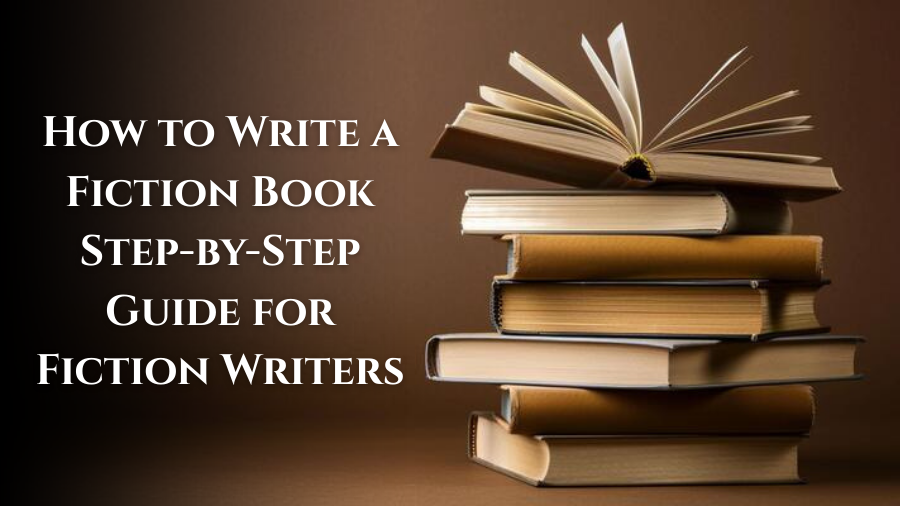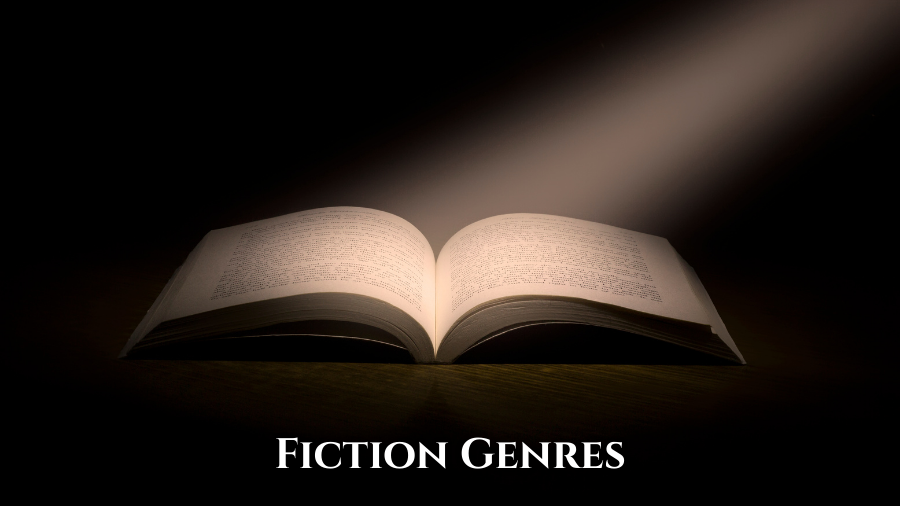So you want to learn how to write a fiction book. Great choice. This guide is for new writers, content creators, and first-time novelists. We’ll use short words and clear steps. We’ll show how to plan, draft, edit, and publish. You’ll see checklists, tiny examples, and friendly tips. By the end, you’ll have a simple plan you can follow from page one to “The End.”
What You’ll Learn
- A plain fiction writing guide from idea to launch.
- How to start writing a fiction novel with a strong plan.
- How to map plot, build scenes, and keep pace.
- Tools for fiction character development that feel real.
- Ways to find and grow fiction story ideas.
- Clean formatting rules for agents and stores.
- Paths for self-pub or traditional deals, step by step.
- Simple habits that help you finish your book.
Start with Your One-Sentence Promise
A promise is the heart of your book. It’s one sentence that says what the reader will get.
Template: “A [hero] must [goal] when [problem] happens, or [stakes].”
Example: “A shy coder must cross a desert city to save her brother before a dust storm hits.”
This promise guides your choices. It shapes plot, cast, tone, and setting. Tape it to your screen. Read it before you write. If a scene does not serve the promise, cut it or save it for later.
Fiction Genres: Pick a Lane (but bend it later)
Genre is the type of story. It sets the reader’s hopes. It tells them what kind of ride they’ll get. You can mix genres later, but pick one main lane now. That lane keeps your choices clear and your pages steady. It also helps you choose cover style, voice, and length. The right lane makes it easier to find your reader fast.
Fantasy:
Magic, quests, and new worlds. Think spells, crowns, dragons, and lost maps. Magic must have rules, or scenes feel random. Write the rules down and stick to them. Epic fantasy is big and long, with many lands and wars. Urban fantasy puts magic in our world, often in a city at night. Readers expect wonder, danger, hope, and a brave heart at the center. Show the cost for power. Show a price for each spell.
Examples: The Lord of the Rings
Science fiction:
Tech, space, and future problems. Ships, robots, and wild ideas. Ask how new tools change daily life, love, and rules. Hard sci-fi leans on real science and careful detail. Soft sci-fi leans on people and big “what if” questions. Dystopias, space opera, and cyberpunk all live here. Keep timelines, terms, and tech limits clear. Readers want to feel the “possible,” even when it’s bold.
Examples: Dune
Mystery/Thriller:
Clues, danger, and twists. A mystery asks, “Who did it?” A thriller asks, “Will they stop it in time?” Plant fair clues and red herrings. Don’t cheat the reader. Raise the stakes in each chapter. Keep chapters tight and tense, with clear deadlines and risks. Let the hero’s choices drive the hunt, not luck alone. End many chapters with a hook or shock.
Examples: Sherlock Holmes, Gone Girl, The Da Vinci Code, and The Silence of the Lambs
Romance:
A love arc with a happy end (HEA or HFN). Two leads meet, clash, grow, and choose love. Pick your heat level early and keep it steady. Tropes help, like enemies to lovers, fake dating, or second chance. Show real conflict that love must solve. Give readers longing, laughs, and a payoff that feels earned. Consent and respect matter on every page.
Examples: Pride and Prejudice
Horror:
Fear, dread, and survival. The threat can be a monster, a curse, a haunted place, or a cruel mind. Build mood with setting, sound, and shadow. Show a safe space first, then break it. Use restraint so fear can grow. Be careful with harm; aim for respect and care. Subgenres include psychological, supernatural, cosmic, and body horror. Let courage and cost shape the end.
Examples: The Haunting of Hill House
Historical:
Set in a real past time. Get key facts right: clothes, food, travel, laws, and slang. Use small, true details to ground the tale. The history should press on choices and raise costs. Research enough to be clear, then tell a human story. Avoid modern words and ideas that don’t fit the era. Let the time period shape plot, stakes, and tone.
Examples: The Book Thief or The Nightingale
Literary:
Focus on voice, theme, and inner change. The “why” matters as much as the “what.” Language is careful and strong. You can still have plot and twists, just with extra weight on style and meaning. Time may shift. Endings may feel open but true. Readers want sharp lines, deep insight, and lasting images.
Examples: The Remains of the Day or Atonement
Young Adult (YA):
Teen leads and teen stakes. The lens is teen, even if the threat is huge. Themes often include first love, voice, family, and identity. Any genre can be YA if told through this lens. Keep pace brisk and tone honest. Respect the reader. Cliffhangers and strong chapter ends work well here.
Examples: The Hunger Games, The Fault in Our Stars, or Divergent
Your lane shapes your cover, blurb, and pitch. It also shapes length and style. Many romances and mysteries are shorter. Many epic fantasies are longer. YA often sits in the middle. Pick the lane that fits your promise and reader.
You can explore a deeper lane later, like how to write a historical fiction book or how to write horror fiction, but start simple and finish the first draft. Choose one lane, name the core tropes, and list three books like yours. Then write with that map in mind. When you’re done, you can blend, bend, or break rules on purpose. Top of Form Bottom of Form
How to Write a Fiction Book: Step-by-Step Roadmap
These steps move you from a blank page to a finished draft. Go in order. Move fast where you can. Slow down for the big choices. Keep this roadmap close while you write. This guide is specifically designed to help write a fiction book for beginners.It will keep your book on track and your mind calm.
Step 1: Clarify the core
- One-sentence promise. Say what the story gives the reader. Use this frame: “A [hero] must [goal] when [problem] hits, or [stakes].”
- Example: “A shy coder must cross a desert city to rescue her brother before a dust storm hits.”
- Main genre and mood. Pick one lane (mystery, romance, fantasy, etc.). Name the mood (bright, tense, eerie, tender). Your lane and mood set the rules.
- Ideal reader profile. Picture one reader. Note age, tastes, and how much time they read.
Example: “A busy teen who likes fast, hopeful stories.”
Write these three on a card. Tape it to your screen. Check every scene against that card.
Step 2: Build a quick cast
Write three to six-character notes. Use one line each. Keep roles clear.
- Hero: want, fear, flaw, and a skill.
- Example: “Maya wants a scholarship, fears failure, hides pain, runs fast.”
- Antagonist: a want that blocks the hero. Not always evil, but in the way.
- Sidekick or mentor: what they add (humor, wisdom, maps, courage).
- Love interest or rival: point of tension and growth.
Give each person a tiny tell. A phrase, a habit, a scar, or a keepsake. Plan one way each will change by the end.
Step 3: Create a beat outline
A beat is a key moment that moves the story. Use 8–12 beats. One line each. Keep cause and effect tight. No loose “and then” beats.
- Hook: A sharp image or problem that grabs us.
- Inciting event: Life tilts. The hero can’t ignore it.
- First push: The hero acts, even if clumsily.
- First setback: The plan fails or a cost appears.
- Midpoint twist: New truth or power flips the board.
- Costs rise: Time runs short. Risks grow. Friends doubt.
- Dark night: The low point. Hope feels lost.
- Brave choice: The hero chooses courage over fear.
- Showdown: The hardest test of skill and heart.
- New normal: Life resets with real change.
- Optional: Add a short B-plot list (friendship, family, or romance) and make it touch the A-plot at the midpoint or the end.
Step 4: Choose point of view and tense
- POV: first person (“I”) for close voice, or third person (“she/he/they”) for a bit more distance. Third limited stays inside one head at a time.
- Tense: past is classic and smooth. Present feels urgent and quick.
Pick one and stay steady. That keeps the voice clear.- Example switch test:
- First/past: “I ran for the gate before it closed.”
- Third/present: “She runs for the gate before it closes.”
Choose the one that fits your genre and reader.
Step 5: Pick a scene list
Turn beats into scenes. A scene has a goal, conflict, and change.
- Goal: what the hero wants now.
- Stakes: what can go wrong if they fail.
- Turn: what changes by the end of the scene.
Draft a list like: “Ch. 4 Maya sneaks into the stadium; guard stops her; she trades a favor, gets a key.” Reuse locations to save brain power. Vary scene types: action, reveal, and heart. End many scenes with a hook to keep pages turning.
Step 6: Set a tiny schedule
Write by time or by words. Small steps add up fast.
- Time rule: 30–45 minutes per day. Set a timer. Stop when it dings.
- Word rule: 500–800 words per day. Mark the count and move on.
Pick five days a week. Protect one day to rest. Set a floor goal for hard days (100 words). Set a ceiling goal for busy weeks (no more than 1,000). End each session by typing a simple note: “Next, Maya argues with Coach.” Tomorrow you’ll start faster.
Step 7: Worldbuilding in small bites
Pick 5–7 places you’ll use a lot. List how each place looks, smells, and sounds. Add one rule per place.
Example list: “Track at dawn (cold air, wet lanes, echo). Bus stop (diesel, gum, gossip). Home kitchen (warm light, clack of mugs). Desert ridge (dry wind, grit teeth).”
Reuse sets so scenes feel linked and your brain stays fresh. Sketch a tiny map if it helps. Add a short timeline for key events. Use only the details that serve the mood or plot. Save deep research for later passes.
Step 8: Draft fast, revise slow
Write the ugly first draft with speed. Forget how long does it take to write a fiction book. Allow yourself to be messy. Don’t fix commas yet. Don’t stop to research tiny facts. Put “TK” where you need to check later (it’s a newsroom tag that’s easy to find).
Use simple flags like “[rename uncle]” or “[describe bus stop].” Keep moving to the end. A finished rough draft beats ten perfect first chapters. In revision, you’ll fix logic, sharpen voice, and polish lines. For now, get the story down.
Fiction Character Development: Make People We Can’t Forget
Strong characters pull readers through the book. Use this simple sheet for each lead:
Character Sheet (one page):
- Name, age, and role
- Want (outer goal)
- Need (inner lesson)
- Fear (what they avoid)
- Flaw (what hurts them)
- Skill (what helps them)
- Backstory spark (a moment that shaped them)
- Tell: one line they believe that will change by the end
Tiny example:
Maya, 16, runner.
Want: to win regionals to get a scholarship.
Need: trust a team, not only her speed.
Fear: failing her family.
Flaw: hides pain until it’s too late.
Skill: fast, smart pace.
Spark: lost a race by helping a friend.
Belief: “Going alone is safer.”
End belief: “We win by carrying each other.”
Use action to show who they are. Don’t explain it. Let choices speak. Let mistakes have costs. Let growth have proof.
Plot Building: From Idea to Events That Matter
Plot is the chain of causes. Each scene should push the next scene. Avoid random jumps.
Simple chain template:
- Because X happens, the hero tries Y.
- Because Y fails, the stakes become Z.
- Because the stakes rise, the hero risks Q.
- That choice sparks the showdown.
Keep goals clear. Raise costs as you go. Place the midpoint in the middle with a reveal or a major turn. Then press toward the hardest choice. End with a change that feels earned.
Structure Options: Easy Models That Work
You don’t need complex charts to write a fictional book that sings. Use a simple model and adjust as needed.
Three-Act Model (classic)
- Act 1 (25%): Setup, inciting event, and a point of no return.
- Act 2 (50%): Rising tries, midpoint shock, dark night.
- Act 3 (25%): Bold choice, climax, and new normal.
7-Point Model (compact)
Hook → Inciting → First Plot Point → Midpoint → Second Plot Point → Climax → Resolution.
Chapter Rhythm
Let most chapters end with a small hook. A question, a twist, or a hard choice keeps pages turning.
Scene Craft: Goals, Stakes, and Turns
Each scene needs:
- Goal: What does the lead want now?
- Conflict: Who or what stands in the way?
- Stakes: What happens if they fail?
- Turn: What changes by the end of the scene?
Tiny example:
- Goal: Maya needs access to the track after hours.
- Conflict: Guard blocks her.
- Stakes: She’ll miss joining trials.
- Turn: She helps the guard with a problem and gets a key, but owes a favor.
Vary scene types. Mix action scenes, reveal scenes, and quiet heart scenes. Too much of one thing grows dull.
Voice and Style: Sound Like You
Voice is how your words feel. You can write simply and strongly. Use active verbs. Use concrete nouns. Avoid fluff and filler. Keep sentences short, but vary the rhythm. Read your pages out loud. If a line sounds stiff, rewrite it. If a paragraph feels muddy, cut it in half.
Dialogue That Feels Real
Good talk on the page is tight. It has rhythm. It reveals character and pushes the plot.
Do:
- Use short lines most of the time.
- Break up speech with action beats.
- Let people talk past each other.
- Use silence and subtext.
Don’t:
- Make characters say what the reader can see.
- Load long info dumps into speech.
- Overdo slang you don’t know.
Swap this:
“Let me explain the entire plan in five minutes.”
For this:
“We hit the north door at dawn. No lights. No phones.”
Point of View: Choose the Right Lens
- First person: “I ran.” Close and fast. You feel the lead’s mind.
- Third limited: “She ran.” Close to one head at a time.
- Third omniscient: The narrator knows and tells all. Harder to master.
Pick the lens that fits your genre and tone. If you’re new, try first person or third person limited. They’re clear and strong.
Setting That Serves the Story
Setting is more than a place. It is mood and meaning.
- Use weather and light to set the tone.
- Use props to show history.
- Use small, sharp details. One true detail beats five bland ones.
- Use setting to force action: a storm, a locked gate, a crowd.
Research Without Getting Lost
Research gives your book texture. But don’t drown in it.
- List three facts you must know to start.
- Write the draft.
- Mark places that need deep checks with “TK.”
- Do focused research in revision.
If you write a niche topic, add one source note at the back to guide readers. Name your sources in plain text if you cite a figure.
Planning vs. Discovery: Find Your Mix
Some writers outline every scene. Some discover as they draft. Most do both.
Try this mix:
- Outline 8–12 beats.
- Write three sample scenes.
- Update your outline based on what you learned.
- Keep moving.
This balance gives you a map and room to explore.
Your Writing Routine: Build a Small, Steady Habit
You don’t need hours. You need a habit.
- Pick a daily slot you can keep.
- Use a simple timer (25–45 minutes).
- Turn off Wi-Fi if you can.
- End each day by noting the next line to write.
You’ll miss days. That’s okay. Return to the chair. The book needs you more than it needs perfect streaks.
How to Start Writing Fiction (for Beginners)
Beginnings feel big. Keep them small and kind.
- Write one opening scene where life changes.
- Show the lead’s want in the first pages.
- Introduce a problem that forces action.
- Use clear, simple lines.
- Save world details for later scenes.
A strong start gives you momentum. Aim for 1,000–2,000 words by the end of week one. That small win will carry you forward.
Drafting Plan: Week-by-Week Example
Week 1: Promise, beats, and three scenes.
Week 2: 6–8 more scenes.
Week 3: Fill Act 1.
Week 4–5: Draft Act 2 to the midpoint.
Week 6–7: Draft to the dark night.
Week 8: Draft Act 3.
Week 9: Read the draft once, no edits.
Week 10: Make a revision plan.
This is one way. Adjust for your life and book length.
Revision: Turn Rough Pages into Clean Prose
Edit in layers. Don’t try to fix everything at once.
- Big picture pass: Do the beats land? Does the lead drive action? Cut or move scenes.
- Scene pass: Goal, conflict, stakes, and turn in each scene.
- Character pass: Deepen motives, voice, and change arcs.
- Line pass: Tighten sentences. Swap vague words for concrete ones.
- Copy pass: Fix grammar, typos, and style. Keep a style sheet for names, dates, and terms.
If a scene has no change, cut it or make it earn its place.
Beta Readers and Sensitivity Readers
Beta readers are early testers. Ask 2–5 people who like your genre. Give them three questions:
- Where did you get lost?
- Where did you feel a lot?
- What would you cut?
Sensitivity readers can help when you write outside your lived experience. They spot harm, gaps, and bias. Pay them for their time. Listen with care and respect.
Formatting Your Manuscript
Agents and stores expect clean files.
- Use a common font (12 pt, double-spaced for submissions).
- 1-inch margins, aligned left.
- Title page with name, contact, and word count.
- Page numbers in the header.
- Scene breaks with a simple symbol like “***”.
For ebooks, use clean styles and simple chapter headings. For print, ask your printer for trim sizes and layout rules.
Publishing Paths: Traditional vs. Self-Publishing
Both paths can work. Choose the one that fits your goals.
Traditional Publishing
- Pros: Advance pay, pro editing, wide print reach.
- Cons: Slower, more steps, less control.
- How: Write a query letter to agents. Send pages per their rules. If signed, your agent sends your book to editors.
Self-Publishing
- Pros: Full control, faster to market, higher royalty per sale.
- Cons: You handle (or hire) editing, cover, and marketing.
- How: Hire pros as needed. Format for ebook and print-on-demand. Upload to major stores. Plan your launch.
There’s no one “right” way. Start where you can act now. You can also release short work first and learn as you go.
Marketing Basics for Authors
You don’t need to be loud. You need to be clear.
- A simple site with your bio and book info.
- An email list with a welcome gift (a chapter or short story).
- One social channel you enjoy.
- A launch plan with three beats: tease, reveal, release.
- A media kit: short bio, author photo, cover, and blurb.
Share small, real updates. Show your process. Invite readers into your world.
Tools and Templates
- Story beats sheet: 1 page.
- Character sheet: 1 page per lead.
- Style sheet: Names, places, dates, spellings.
- Daily log: What you wrote, what’s next.
Light tools help you move and keep you from getting lost.
Common Mistakes (and Easy Fixes)
No clear goal for the hero
Fix: State what they want by chapter two.
Too much backstory early
Fix: Drip small details when they matter.
Scenes with no change
Fix: Add a turn or cut the scene.
Flat dialogue
Fix: Shorten lines. Add action beats. Add subtext.
Stalled draft
Fix: Skip to the next fun scene. Return later.
Fun Side Read for Fans
For a light, nerdy break, check out our in-house debate on the strongest fictional character. Then come back and write your own legend.
Sample Writing Plan You Can Copy
- Promise and genre picked (day 1).
- 10 beats written (day 2).
- Cast sheets done (day 3–4).
- Scene list for Act 1 (day 5).
- Draft five days a week, 800 words a day (weeks 2–7).
- Finish the draft (week 8 or 9).
- Rest the draft for one week.
- Big picture revision (week 10).
- Line and copy edits (week 11–12).
- Share with two beta readers (week 13).
- Final pass and decision on your publishing path.
Adjust as needed. The point is steady work and clear steps.
If You Want to Go Deeper by Genre
- Building dates, dress, and daily life? Write a historical fiction book.
- Want to craft dread and surprise with care? Try to write horror fiction for tone, timing, and fear.
Each deep dive keeps the same simple style and steps.
About Arkham House Publishers
Arkham House Publishers helps new and seasoned writers plan, write, edit, and ship strong books. We speak in plain words and break big jobs into small steps. We guide your outline, scenes, and voice. We review pages, shape arcs, and polish lines. We prep clean files for the ebook and print. We plan simple, kind launches that fit your life.
What we offer:
- Story shaping and a custom fiction writing guide.
- One-on-one coaching to start writing a fiction novel without overwhelm.
- Developmental and copy edits.
- Cover art and interior layout support.
- Promotional materials and comprehensive marketing.
- Publishing guidance
Want a steady, friendly partner while you write a fiction book for beginners or your next big novel? Arkham House Publishers will review your idea and help you move from blank page to clean draft with less stress and more joy.
Conclusion: Yes, You Can Do This
How to write a fiction book is not a secret. It’s a string of small, honest steps. Pick a promise. Build a cast. Outline a few beats. Draft fast. Revise with care. Choose a path to share your story with readers. If you want calm, expert help, Arkham House Publishers is here. Let’s turn your idea into a book you’re proud to share, starting today.






